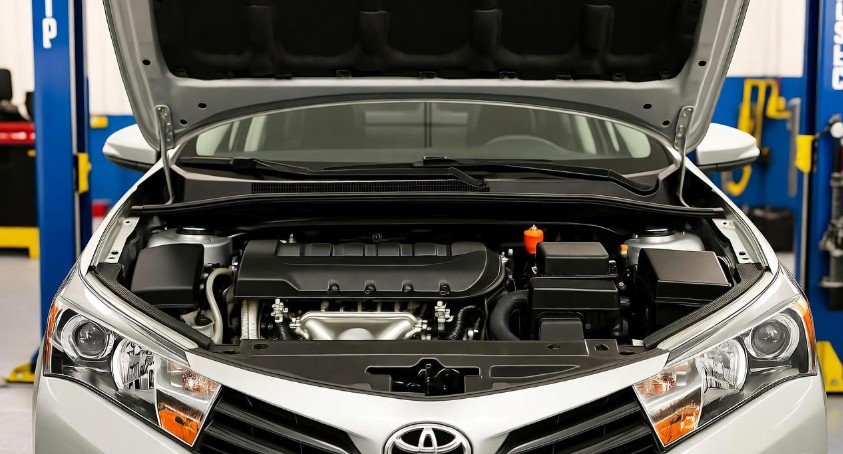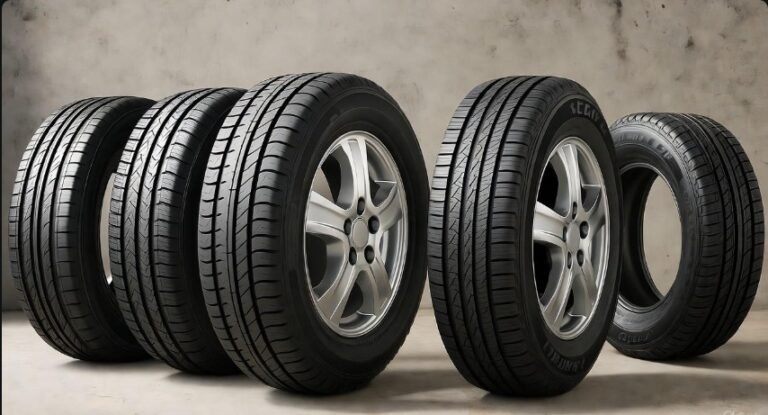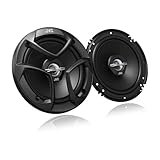How to Reset Toyota Corolla Check Engine Light: Quick and Easy Steps

You’re driving your Toyota Corolla down a peaceful road, music on, mind relaxed — then suddenly, that little orange check engine light flickers on the dashboard. Your heart skips a beat. “Did I do something wrong?” you wonder. Don’t worry — this is one of the most common things Corolla owners experience. The good news? In most cases, the issue isn’t serious, and resetting that warning is quite simple once you know how.
In this guide, I’ll share how to reset Toyota Corolla check engine light easily — no expensive tools, no complex jargon. You’ll learn the exact steps, what to check before resetting, and how to make sure it doesn’t come back. I’ll also share a few personal tips from my own experience working with cars — especially Toyotas — because sometimes, those little details make all the difference.
Let’s dive in and get your Corolla dashboard back to that clean, warning-free look.
In This Article
- 1 Why the Check Engine Light Turns On
- 2 Safety First: Things to Check Before Resetting
- 3 Understanding the Meaning Behind the Light
- 4 Step-by-Step Guide: How to Reset Toyota Corolla Check Engine Light
- 5 Using an OBD-II Scanner for Resetting
- 6 Personal Experience: The Day My Corolla Faked Me Out
- 7 Common Causes You Should Check Before Resetting
- 8 When You Should Avoid Resetting
- 9 Post-Reset Monitoring: What to Watch For
- 10 Maintenance Tips to Prevent the Check Engine Light
- 11 DIY vs Professional Help: When to Call a Mechanic
- 12 Extra Tips for a Smooth Reset Experience
- 13 FAQs About Resetting Toyota Corolla Check Engine Light
- 14 Conclusion: Keeping Your Toyota Corolla Happy
Why the Check Engine Light Turns On
Before you even think about resetting that light, it’s important to understand why it came on. The check engine light isn’t just decoration; it’s your car’s way of saying, “Hey, something’s not right!”
This light can turn on for a wide range of reasons:
-
A loose or damaged gas cap (this is surprisingly common)
-
A faulty oxygen sensor
-
A malfunctioning catalytic converter
-
Problems with the mass airflow sensor
-
Worn spark plugs or ignition coil issues
In short, the check engine light means your Corolla’s onboard computer has detected something unusual in the engine or emissions system.
Sometimes, the light comes on for something minor — like forgetting to tighten the gas cap after refueling. But in other cases, it might point to something serious, like a failing sensor or an engine misfire.
That’s why, before you reset it, make sure you’re not ignoring a real issue. Resetting the light without fixing the problem is like putting a bandage over a leak — it might look fine for now, but the problem will return.
Safety First: Things to Check Before Resetting
Before performing any reset, you should take a few minutes to ensure safety and accuracy. Here are a few key steps to follow:
-
Park your car in a safe, level area.
Turn off the ignition completely and set the parking brake. -
Inspect under the hood.
Look for any loose cables, leaking fluids, or unusual smells. If anything looks off, fix it first. -
Check the gas cap.
Believe it or not, a loose gas cap is one of the top reasons the check engine light comes on in a Toyota Corolla. Make sure it’s tightened until you hear a click. -
Read the owner’s manual.
Your Corolla’s manual will often have model-specific guidance on check engine light warnings and reset procedures.
By taking these small precautions, you avoid unnecessary risks and ensure that resetting the light won’t hide a deeper issue.
Understanding the Meaning Behind the Light
Think of the check engine light as your car’s “heartbeat monitor.” When it flashes or stays solid, it’s showing the health of your vehicle’s engine system.
-
A solid check engine light usually means a minor issue.
For instance, an oxygen sensor might need replacing, or the gas cap might be loose. -
A flashing check engine light, however, indicates something more serious — often related to misfires that could damage your catalytic converter.
If your light is flashing, do not attempt to reset it immediately. Instead, address the root cause first. Resetting without fixing could worsen the damage or lead to expensive repairs later on.
Step-by-Step Guide: How to Reset Toyota Corolla Check Engine Light
Now, let’s get into the main part — the actual reset process. This method is simple, reliable, and can be done at home without any advanced tools.
Step 1: Turn Off the Engine
First, switch off your car completely. Wait for a few seconds to allow all electrical systems to shut down properly. This ensures safety when handling the battery.
Step 2: Disconnect the Negative Battery Cable
-
Pop open your Corolla’s hood and locate the battery.
-
Using a wrench, carefully loosen the negative (-) terminal clamp.
-
Once loose, disconnect it and keep it away from the battery post.
This step cuts power to the car’s electronic control unit (ECU), which stores the error codes that trigger the check engine light.
Step 3: Wait for 15 Minutes
Patience pays off here. Leave the battery disconnected for around 15 minutes. This gives the ECU time to fully reset and clear any stored error codes.
You can take this time to check your oil level, coolant, or any other fluids — it’s a good mini-maintenance habit.
Step 4: Reconnect the Negative Cable
After waiting, reconnect the negative cable and tighten it securely with the wrench. Make sure it’s snug but not overly tight.
This reconnects the electrical flow and resets the system.
Step 5: Start the Engine
Now comes the satisfying part — turn the ignition key or press the start button.
If the check engine light stays off, congratulations! You’ve successfully reset it.
If it comes back on after a few minutes or drives, that means the underlying issue is still present, and you’ll need to inspect further or use a diagnostic tool.
Using an OBD-II Scanner for Resetting
If you want a more modern and precise method, you can use an OBD-II scanner — a small device that plugs into your car’s onboard diagnostic port.
Here’s how:
-
Locate the OBD-II port under the dashboard (usually near the steering column).
-
Plug in your OBD-II scanner.
-
Turn on the ignition but don’t start the car.
-
Use the scanner’s menu to read and clear error codes.
-
Once cleared, start the engine to confirm the light is off.
Using an OBD-II scanner is especially helpful because it not only resets the light but also tells you why it was triggered.
If the same code appears again later, you’ll know exactly what to fix next time instead of guessing.
Personal Experience: The Day My Corolla Faked Me Out
Let me share something personal. A few years ago, I was driving my 2015 Toyota Corolla when the check engine light came on suddenly after a gas refill. I panicked, thinking it was something serious.
I pulled over, popped the hood, and found everything looked fine. Then I remembered something a mechanic once told me — “Check your gas cap first.” Sure enough, it wasn’t tightened properly.
After securing the cap and following the battery reset method, the light disappeared.
That day taught me an important lesson — sometimes, it’s the smallest things that cause the biggest scares.
That’s why I always tell friends: don’t jump to conclusions when that light pops up. Take a calm, step-by-step approach. Most of the time, it’s an easy fix.
Common Causes You Should Check Before Resetting
Before you reset your Toyota Corolla check engine light, it’s smart to review a few common culprits. Here’s a quick table to help you:
| Possible Cause | What It Means | Easy Fix |
|---|---|---|
| Loose Gas Cap | Air leak in fuel system | Tighten or replace the cap |
| Faulty Oxygen Sensor | Wrong air-fuel ratio | Replace sensor |
| Dirty Mass Air Flow Sensor | Incorrect engine readings | Clean or replace sensor |
| Worn Spark Plugs | Misfiring engine | Replace spark plugs |
| Bad Catalytic Converter | Emissions not working properly | Needs professional repair |
Most of these problems can be checked at home or diagnosed using an OBD-II scanner. Fixing them first ensures that when you reset the light, it stays off for good.
When You Should Avoid Resetting
There are times when resetting the check engine light isn’t the right move. For example:
-
If the light is flashing, it’s a sign of a serious engine misfire. Resetting it won’t solve anything.
-
If you smell burning, fuel, or smoke, stop immediately and seek professional help.
-
If your car feels sluggish, stalls, or vibrates abnormally, get it checked before resetting.
In these situations, resetting might only hide the symptoms temporarily — while the actual problem continues to worsen underneath.
Post-Reset Monitoring: What to Watch For
Once you’ve successfully reset the Toyota Corolla check engine light, don’t just forget about it. The reset clears the warning, but it doesn’t fix any underlying issues. Keeping an eye on your vehicle after the reset is crucial for long-term engine health.
Here’s what to monitor:
-
Dashboard alerts: If the light comes back on shortly after resetting, it indicates the problem is persistent.
-
Engine performance: Listen for unusual sounds, such as knocking, sputtering, or irregular idling.
-
Fuel efficiency: A sudden drop in miles per gallon could signal an unresolved issue with the fuel or air systems.
-
Fluid levels and leaks: Check oil, coolant, and transmission fluid regularly. Even minor drops can cause significant engine stress over time.
By staying proactive, you can catch potential problems early. Think of it like keeping your phone updated — the light may be off, but the system still needs care.
Maintenance Tips to Prevent the Check Engine Light
Regular maintenance is the key to avoiding recurring check engine light alerts. Here are some practical steps to keep your Toyota Corolla running smoothly:
-
Routine Oil Changes: Fresh oil keeps your engine lubricated and reduces wear on vital components.
-
Check Spark Plugs: Replace them every 30,000–50,000 miles to maintain proper ignition.
-
Inspect Air and Fuel Filters: Dirty filters can affect airflow and fuel efficiency, triggering the light.
-
Battery Health: Ensure the battery and connections are clean and secure. A weak battery can cause sensor errors.
-
OBD-II Scans During Service: Even if the light isn’t on, scanning periodically can detect minor issues before they escalate.
Following these tips not only prevents the light from coming back but also improves your Corolla’s performance and longevity.
DIY vs Professional Help: When to Call a Mechanic
While the battery disconnect method and OBD-II scans are great DIY solutions, sometimes professional help is the safest choice.
Consider visiting a mechanic if:
-
The check engine light flashes continuously.
-
You notice performance issues such as stalling, jerking, or excessive vibration.
-
Multiple trouble codes appear on your scanner, and you’re unsure how to interpret them.
-
You’re not comfortable handling battery connections or electrical components.
A professional can diagnose deeper engine issues, replace faulty components, and ensure your Corolla runs safely and efficiently.
Extra Tips for a Smooth Reset Experience
Resetting your check engine light doesn’t have to be stressful. Here are a few additional tips I’ve learned over the years:
-
Keep a small toolkit in your car, including a wrench for battery terminals. It saves time and prevents fumbling under the hood.
-
Document error codes before clearing them. You might need the information for future reference or mechanic consultations.
-
Reset during cooler hours of the day. High heat can sometimes affect the ECU reset process.
-
Perform regular self-inspections. Look for signs of wear on belts, hoses, and connectors. Early detection often prevents a check engine warning.
These small habits turn a scary dashboard light into a manageable, routine maintenance step.
FAQs About Resetting Toyota Corolla Check Engine Light
1. Can I reset the check engine light without fixing the problem?
Yes, you can, but it’s not recommended. The light will likely come back until the underlying issue is resolved.
2. How long does it take for the light to reset after disconnecting the battery?
Typically, around 15 minutes is sufficient for the ECU to clear stored error codes.
3. Will using an OBD-II scanner erase all vehicle data?
No, it only clears the trouble codes and resets the check engine light. Your settings and saved data remain intact.
4. My light keeps coming back after resetting. What should I do?
This indicates an unresolved issue. Use a scanner to read the trouble codes and fix the root problem or consult a mechanic.
5. Is it safe to drive with the check engine light on?
If it’s solid and the car runs normally, short drives are usually okay. If it’s flashing, stop driving immediately and get professional help.
6. Can a bad battery cause the check engine light to turn on?
Yes. Low voltage or poor connections can trigger error codes in the ECU, causing the light to appear.
7. How often should I scan my Corolla even if the light is off?
Every 6–12 months, or during routine maintenance, scanning can catch minor issues before they escalate.
8. Does resetting the check engine light affect my emissions test?
If you reset without fixing the problem, your car might fail an emissions test because the ECU hasn’t recorded complete readiness for all systems.
Conclusion: Keeping Your Toyota Corolla Happy
Resetting the Toyota Corolla check engine light is easier than it seems. Whether you use the battery disconnect method or an OBD-II scanner, a few simple steps can restore that reassuring blank dashboard.
But remember: resetting is only part of the process. Diagnose the root cause, maintain your vehicle regularly, and watch for any post-reset signs. Your Corolla will reward you with smooth performance, fewer surprises, and a longer lifespan.
Think of it like a friendship — the check engine light is just your car trying to communicate. Listen, respond, and care for it, and it will keep you moving safely for years to come.






